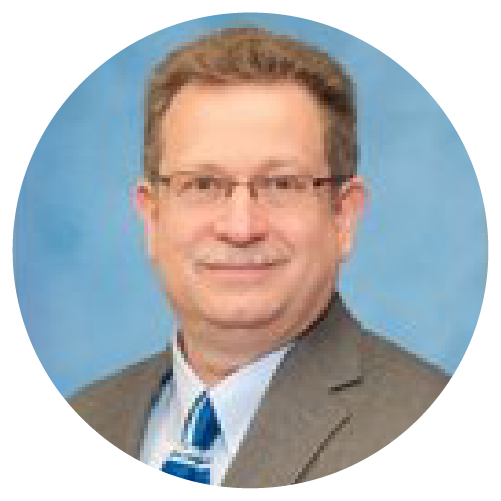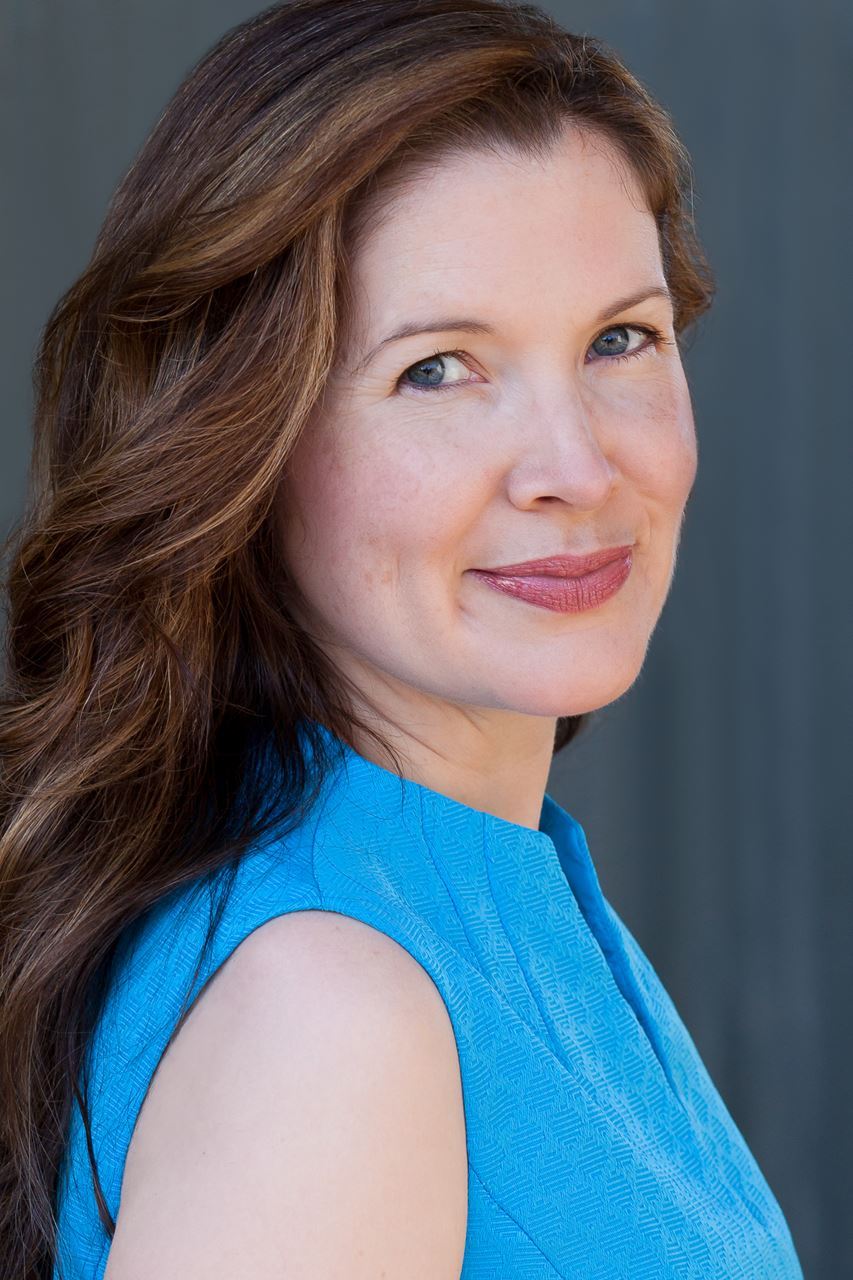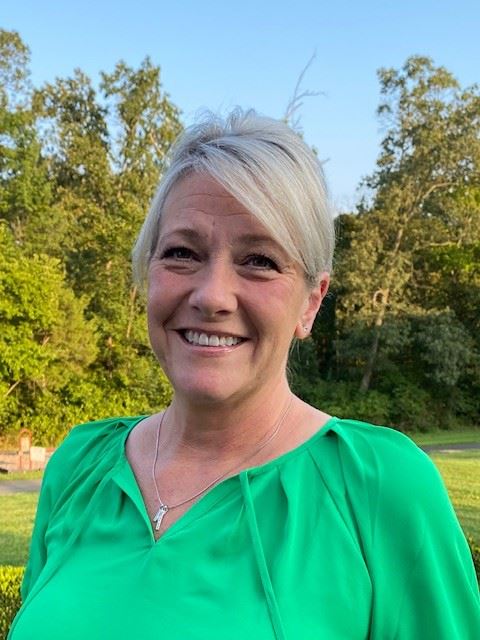
 President's Address
President's Address
Joel Platt, MD, FSABI
Spring has sprung! (at least that is what the calendar tells us). As I watched snow accumulate from my office on a mid-April day I was reminded to expect the unexpected. In fact, the unexpected has become somewhat routine over the past couple years. For example, last October seemed strange and a bit unexpected that I was able to attend in-person meetings alongside my colleagues from across the country. I am proud that SABI was one of the first societies to get back to an in-person meeting in two years!
We are all looking forward to SABI 2022 being held in New Orleans, October 22 – 26. Program Chair, Dr. Brian Herts and his committee are developing an exciting & innovative program. Dr. Mishal Mendiratta-Lala, alongside her Research Committee members, are busy planning one of the hallmarks of a SABI meeting, the Science Sessions. I am confident they will develop a diverse, thought-provoking group of sessions for us all to enjoy.
Aside from annual meeting planning; SABI committees have been meeting including Early Career, Communications, Publications, and Membership. New committees are being formed to reflect our changing world and society such as the Diversity, Equality and Inclusion committee (DEI). Year-round content including the Book Club and Webinars are underway with several more planned for 2022.
JCAT, the official journal of SABI is making great strides of improvement under the tireless leadership of Editor in Chief, Dr. Eric Tamm. He is assembling a superb editorial board with a strong connection to SABI Members and Fellows.
It has been about 3 years since the board undertook the rebranding effort at the 2019 yearly Board retreat and it is a sign of our times that the board had their first in person retreat since then, in early April. I remain optimistic for the future growth and success of our society.
I look forward to welcoming new Fellows to SABI this year and new members throughout the year. Although it seems like a blink of the eye that about half my presidential year has passed , it is spring and a time to bring hope for a fantastic 2022 for SABI and all of you.
| SABI 2022 is in New Orleans, October 22-26, 2022 The theme this year for the SABI Annual meeting in New Orleans is SABI Innovation: Bringing what’s New to New Orleans. SABI Members and Fellows lead innovation in body imaging. The Annual meeting is an opportunity to learn and share these cutting-edge topics in advanced body imaging along with topics that take us “beyond the reading room." Last year we introduced a new Vanguards of Research plenary, where SABI Fellows, who’s research is typically presented at the annual meeting by the junior colleagues and trainees they mentor, had the opportunity to present their own research journeys. These phenomenal talks reviewed the how and why, and successes and struggles, in areas of diversity research, fast musculoskeletal MRI, 4D Flow MRI, and photoimmunotherapy. This year’s meeting will be similarly innovative, as we add new plenary sessions and showcase our innovative discoveries by incorporating a wider variety of imaging modalities. To kick off the meeting, there will be a half-day course on Molecular and Functional Imaging, on Saturday afternoon, October 22nd. We are adding a plenary session to review current ideas in diversity, equity, and inclusion, and an US Innovations plenary to our current line-up of MR and CT innovation plenary sessions. That’s it for now - but there is so, so, much more to come, and it will all be in NOLA in October. We hope to see you there! On behalf of the entire program committee, |
View JCAT's Current Table of Contents JCAT is looking for submissions in the following “hot topic” areas of interest as identified by our editors and wider Editorial Board We are accepting review articles and original scientific submissions. Please feel free to reach out to Eric Tamm, FSABI, Editor-in-Chief (eprad76@hotmail.com) with ideas or outlines which he can share with the specialty Associate Editors to see if proposed submissions would be a good fit for the journal and to get helpful suggestions from them. All submissions will be subject to blinded peer review, must score sufficiently well with reviewers and the Associate Editor to be published, and will be on a “first come” basis, i.e., if a topic has already been covered sufficiently by an earlier submission(s), we will need to decline later submissions on that topic. Here are topics (not in order of preference):
| JCAT Articles Published In Print to Date in 2022 Where Authors Identified at least One Co-Author as SABI Members/Fellows Note: The following articles are those in which the submitting author indicated at submission that one or more authors were SABI members/fellows and SABI staff confirmed active membership. CT Assessment of Sarcopenic Myosteatosis for Predicting Overall Survival in Colorectal Carcinoma: Systematic Review, by Kevin Franco Valle, BSN; Meghan G Lubner, MD; Perry J Pickhardt, M.D., Mar/Apr Machine learning based prediction model for closed loop small bowel obstruction using CT and clinical findings, by Riya Goyal, MD; Leonora W. Mui, MD; Sadjad Riyahi, MD; Martin R. Prince, MD; Hwayoung K. Lee, MD, Mar/Apr Multimodality Multisystem Imaging of Pregnancy-related Changes: Featuring Neurologic, Cardiothoracic, Breast, Gynecologic, and Musculoskeletal Issues, by Carolyn F Dishuck, BS; Rachel Z Bass, MD; Elizabeth M Allen, MD; Efstathia F Andrikopoulou, MD; Samuel J Galgano, MD; Desmin M Milner, MD; Ashley D Wright, MD; Kristin K Porter, MD, PhD, Mar/Apr Artificial intelligence in diagnostic radiology; Where do we stand, challenges, and opportunities, by Ahmed W. Moawad, MD; David T. Fuentes, Ph.D; Mohamed G ElBanan, M.D.; Ahmed S. Shalaby, M.D.; Jeffrey Guccione, M.D.; Serageldin Kamel, M.D.; Corey T. Jensen, M.D.; Khaled M. Elsayes, MD, Jan/Feb Evaluation of the viability of untreated leiomyomas using CT-detected calcification patterns, by Erin Crane; Edward Fenlon; Susan M. Ascher; Dhikshitha Balaji; Evan Siegelman, Jan/Feb |
Becoming a Reviewer for JCAT We would like to thank again all those who review for JCAT! Your contributions are central to improving the quality of the work submitted to the journal. If you are interested in becoming a reviewer, please send a copy of your CV to Eric Tamm, M.D., Editor-in-Chief, JCAT (eprad76@hotmail.com) along with information regarding your areas of interest/expertise. JCAT regularly recognizes, in print, and at the annual meeting, reviewers, with the degree of recognition commensurate with their level of contribution. SABI Members receive a significant discount on annual digital access to JCAT. Accessing JCAT Support your Society journal and get access to what you need to read! Check if you have access to JCAT through your institution. If not, ask your institution’s library to get access. If you are not part of an institution, you can subscribe HERE to JCAT at a reduced rate. |
Courtney Moreno, MD Dr. Moreno enjoys attending the SABI annual meeting for the plenary sessions and workshops as well as the scientific sessions. "I always learn something new at SABI that I can apply to my practice when I return to work following the meeting." It is also fun to be able to connect with radiology friends at the meeting. SABI is also a great organization for junior faculty to develop their careers. Dr. Moreno is an Associate Professor of Radiology in the Department of Radiology and Imaging Sciences at the Emory University School of Medicine in Atlanta, Georgia. Her interests include CT colonography and MR imaging, especially of rectal cancer. |
|
Changing the Storyline Radiologists can rewrite the existing narrative on health disparities by reaching out to underserved communities about the lifesaving benefits of CTC. As the third most common and second deadliest cancer in the U.S., colorectal cancer (CRC) remains one of the most preventable cancers by appropriate screening.1 Because CRC starts from an adenomatous polyp that develops over a period of years into a cancer, this extended timeframe provides an ideal window of opportunity for detection, removal, and prevention. Despite this, nearly one-third of eligible candidates remain unscreened.2 As the recommended age to start CRC screening has been lowered to age 45, that percentage may increase.3 As unfortunate as these numbers are, they’re even worse when we zoom in on minorities in the U.S. For example, the incidence of CRC in Black Americans is 20% higher than White Americans, and the mortality rate from CRC is 40% higher.4 CRC is 40% more common in those with a lower socioeconomic status than those of a higher socioeconomic status. Forty-four percent of this racial healthcare disparity is attributed to differences in screening rates, according to the American Cancer Society.5 This is one healthcare disparity that radiologists can work to improve through promoting increased uptake of CRC screening within minority communities. The most prevalent CRC screening method currently in use is called optical colonoscopy (OC). Although OC is the most well-known CRC screening exam, it presents significant challenges for uptake among minority groups. For instance, the use of anesthesia requires a driver post-procedure. Undergoing OC also often requires patients to take a day off from work, which can be a challenge for those in underserved populations. The anesthesia involved with OC also evokes fear in some cultural and ethnic minority groups.6 Furthermore, access to OC continues to be limited by the number of available gastroenterologists to perform the exam and the lower number of gastroenterologist practices in locations convenient for minority screening candidates.7 By comparison, although less widely used than OC, CT colonography (CTC) presents fewer barriers to adoption in underserved communities. Despite the recommendations of the U.S. Preventive Services Task Force (USPSTF) to make CTC screening widely available to all eligible screening candidates, CMS does not currently reimburse for screening CTC unless the patient meets very specific criteria.8 In practice, however, this “one-size-fits-all” approach does not facilitate access to minority screening candidates and contributes to the healthcare disparities we are trying to overcome in the medical community. Although CTC still requires bowel prep, CTC helps overcome many barriers to resistance. First, CTC does not require anesthesia. Second, the procedure takes approximately 20 minutes to perform, and screening candidates can resume normal activities or work immediately afterwards. Plus, CT scanners are widely available to a variety of patients regardless of zip code. For these reasons, CTC has been shown to increase screening percentages for some groups who are offered this option.6–8 Establishing a CTC program to optimize access has realistic potential to impact both CRC incidence and mortality disparities. Optimizing the EHR One tool that radiologists can enlist in their effort to improve access to CRC screening is the EHR system. Results from a 2017 survey indicated that 99% of hospitals and healthcare systems use EHRs.9 Many EHR systems can be programmed to identify patients who have not been screened for colon cancer when they present to a healthcare provider. Once identified, communication tools can educate and encourage minority screening candidates to schedule CRC screening via CTC. Similarly, patient letters, email, or electronic patient portal messages have been used with some success in reaching minority breast cancer screening candidates.10 Building on this success, many healthcare systems are now consolidating these communication channels into centralized systems for health maintenance. The use of automated reminders to “nudge” physicians to order timely CRC screening for minority candidates has been shown to decrease the bias previously seen as a disparity in physician ordering practices.11 Radiologists can play a vital role in decreasing health disparities by extending access to CTC for minorities. Also in line with breast and lung cancer screening programs, CTC makes use of evidence-based dedicated screening intervals and standardized follow-up strategies when it comes to handling abnormal results. Utilizing either established health maintenance modules or working with IT departments to build similar workflows to identify and contact unscreened candidates is possible with a modicum of effort.12 One major advantage of enlisting the EHR in these communications efforts is that if the proper permissions can be approved, the primary care provider (PCP) does not need to activate the screening visit. It is, however, always important to keep the PCP informed of findings and next actions. A recent article indicated that high patient satisfaction scores can be achieved by healthcare systems with automated navigation of patients for preventive oncology screening as opposed to direct involvement of a patient’s frequently over-taxed PCPs.13 Involving Patient Navigators Although the EHR is an important tool in identifying eligible minority CRC screening candidates, its value can be accentuated when used in tandem with nurses, medical assistants, or even community health volunteers — also known as healthcare navigators — who bring a human element to shoring up healthcare disparities. For example, navigators can increase CRC screening uptake among underserved communities by calling unscreened candidates to schedule initial screens. This same approach can work for contacting patients to schedule follow-up appointments for abnormal screening results. Follow-up of abnormal results is another key step to decreasing CRC mortality. Multiple studies have demonstrated success in achieving higher screening rates among minorities with the use of navigators. Surveys indicate that patients are satisfied, are better informed on expectations for follow-up visits, and have increased compliance with follow-up instructions.14 Several studies involving cancer screening have shown that employing patient navigators is an effective way to reduce the number of missed care opportunities and improve patient compliance with both initial screenings and follow-up care.15–17 Although navigators can prove relatively expensive, implementing a strategy to target candidates with higher rates of missed care opportunities can result in cost-effective savings for health systems focused on achieving a healthier population of “covered lives.”18 Beyond enlisting the help of navigators in the clinical setting, the use of community health volunteers as navigators may provide an additional opportunity to address the cultural fears and obstacles unique to specific minority populations. Barriers to CRC screening for minorities have included affected groups being less informed about options and lacking trust in healthcare systems in light of past injustices, such as the Tuskegee Study of untreated syphilis and the forced sterilization of Black patients.19–25 Community navigators may have already established trust with patients within their own communities and can prove vital to extending a CRC screening program’s reach.26 Despite having made great inroads, CTC is still not a widely used alternative for CRC screening. While this can be seen as suboptimal, it also presents an opportunity. Social media announcements, radio spots, church events, and other communication avenues can be used to educate both providers and minority communities about this option for CRC screening. In addition, the ACR offers an online locator tool (bit.ly/CTCFind) to help providers and patients find a nearby site offering CTC. Radiologists can play a vital role in decreasing health disparities by extending access to CTC for minorities. As radiologists, most of us want to help ensure quality care across the board but have found it challenging to do so given that we don’t often interface directly with patients. This is one way to rewrite the script we’ve been given and help those most in need. ENDNOTES 1. Bibbins-Domingo K et al. Screening for colorectal cancer: U.S. preventive services task force recommendation statement. JAMA. 2016;315(23):2564-75. Author |
Improving Access RAD-AID International and the ACR are partnering to eliminate social and structural barriers that lead to health disparities in underserved communities. RAD-AID has partnered with ACR on many initiatives throughout its 13-year history, including support for RAD-AID’s annual global health radiology conference, collaborations in Haiti and Nepal, projects for radiology residents at RAD-AID’s international sites, and the recent collaborative distribution of ACR’s BI-RADS® Atlas to RAD-AID’s partner low-resource breast imaging centers in low- and middle-income countries. When RAD-AID launched the Women’s Health Access Program in the U.S. in 2020, Ian A. Weissman, DO, FACR, chair of the ACR Commission on Patient- and Family-Centered Care (PFCC) Outreach Committee and president-elect of the Wisconsin Radiological Society, reached out to inquire about a potential collaboration between the two groups — as they share similar objectives of reducing healthcare disparities among people of color in the U.S. Patient communication and navigation are essential factors in addressing morbidity and mortality from breast and cervical cancers. One of RAD-AID’s key strategies for capacity-building in underserved areas is to bridge patient navigation, education, and equipment resources. Navigation means directly helping patients to understand care options and find care providers to optimize access, follow-up, and care delivery. Navigation also addresses key social determinants of health, which are integral to health disparities. One way to improve patient access is to advance patient satisfaction and the diversity of providers. Addressing Disparities The RAD-AID USA Women’s Health Access Program, in partnership with Hologic, the Black Women’s Health Imperative, and the ACR PFCC Outreach Committee, seeks to combat existing health disparities. John R. Scheel, MD, MPH, PhD, a breast imaging radiologist at the University of Washington (UW) and director of the RAD-AID USA Women’s Health Access Program, leads this effort, along with Mary W. Wetherall, RN, director of nursing, and Olive Peart, MS, RT(R)(M), program manager of mammography technologists. The initiative will deliver multidisciplinary healthcare to underserved communities. Areas of focus include public outreach, nursing and community navigation, breast and cervical cancer screening, and other medical services for people of color, says Scheel. Sites will be located in cities such as Washington, D.C., Seattle, Denver, Phoenix, Chicago, Philadelphia, and New York, as well as more rural regions of Georgia and Alabama. Partnerships among diverse individuals are necessary to eliminate health disparities, notes Scheel. “By including participants with different backgrounds, we’ll be able to identify gaps in our own knowledge and strategy,” he says. “One of the reasons I think we’ll be successful is that we’re involving patient populations, providers, nurses, RTs, and other patient- and back-facing staff across the continuum of care. We need everyone.” This approach is one of the reasons the ACR PFCC Outreach Committee is excited about the collaboration. “Our committee members bring their areas of expertise and unique life experiences to this initiative,” says Weissman. “We aim to use our different talents to combat health disparities.”
Creating Effective Communication Patient communication is a central component of the project, says Scheel. “One of the big things we’re working on is developing communication, education, and results letters for mammography, as well as appointment reminders,” he says. For these communications to be successful in modifying health behavior, he says, they need to be culturally appropriate and written using words that people of all levels of education and fluency in English can understand. As was necessary for the UW project, outreach needs to incorporate diverse viewpoints and beliefs — as well as the misinformation that already exists in communities. “Many patients we’ve spoken to believe that if breast cancer doesn’t run in their family, they don’t need to worry about it — or they only need one mammogram over the course of their lifetime,” says Scheel. RAD-AID volunteer, Christine B. Ormsby, MD, leads the patient communication work group and is assisted by RAD-AID and PFCC Outreach Committee members. “Outreach will also need to be educationally appropriate,” explains Weissman. “Most medical communication is written at a 12th-grade reading level, although it should be targeted more toward a third-grade level for increased comprehension. One of our goals will be figuring out how to clarify the language in the radiology reports to empower patients to more fully participate in their care.” The ACR PFCC Outreach Committee will not only be working on communication, says Weissman. “A lot of the committee members actually reside in areas where RAD-AID International is setting up program sites,” he says, “so we’ll be on the ground working with the patients.” Producing Results Improving communication and access to underserved communities are only two of the initiative’s many goals. Ultimately, its overarching aim is to address health inequity by providing a model that can be used to address other health problems. “We want to serve as an example that promotes policy change,” says Scheel. “To really improve population health, we need to show a cost-effective solution such as ours exists.” Weissman agrees. “Patients can only advocate for themselves so much,” he says. “Our goal is to remove the obstacles in their way toward the end result of improving their care. Systemic change is also key to improving outcomes and equity in healthcare. We’re confident the RAD-AID USA Women’s Health Access Program will be a part of that change by demonstrating tangible results in these underserved communities.” Developing the Strategy This program is founded on the premise that global health includes local community health. By addressing the upstream sources of health disparities, such as systemic racism and education, RAD-AID USA hopes to include people previously excluded from the healthcare system and, thus, improve population health. This means that RAD-AID’s work applies not just to the low- and middle-income countries, but also to communities in high-income countries that face critical barriers to health equity. Early in Scheel’s career at UW and the Fred Hutchinson Cancer Research Center, he worked on the ¡Fortaleza Latina! program. This program used a multi-level intervention that included patient promoters/navigators at primary care centers and a mammography van to improve breast cancer screening rates in Seattle’s underserved Latinx population. When the van was sent out into the community, program leaders noticed many Latinx patients were reluctant to use these mammography services. He worked with a team to determine why the project was not as initially successful as they had hoped. They discovered many people in the community believed that because the mammography machines were mobile, they were not as high-quality as machines at a hospital. “We assumed addressing awareness, transportation, and cost would fix access issues and increase participation in screening,” explains Scheel. “However, we also needed to provide culturally-appropriate communication, specific to mobile mammovans, so the community understood that the screening exams and radiologists interpreting their exams were of the same quality as what they would receive at our fixed sites.” Misinformation like this is just one reason that underserved populations experience deep inequities in healthcare. Black patients in particular experience higher death rates from breast and cervical cancers, despite having nearly identical incidence rates to White patients. These patients are often screened at lower-resourced and non-accredited facilities and experience longer intervals between mammograms — as well as between abnormal results and follow-ups.1 The collaboration between RAD-AID USA and the ACR aims to address these education and communication gaps. ENDNOTES
Author |
The Exceptionalism of Radiology
As the ACR develops its new strategic plan, it is guiding the specialty and the broader community to work together to realize radiology's potential.
Benjamin S. Bloom, a professor of educational psychology at the University of Chicago, published a landmark book in 1985, Developing Talent in Young People.1 According to Bloom, all the superb performers he investigated practiced intensively, studied with devoted teachers, and were supported enthusiastically by their families throughout their developing years. Later research building on Bloom’s pioneering study revealed that the amount and quality of practice were key factors in the level of expertise people achieved. Consistently and overwhelmingly, the evidence showed that experts are made, not born.
Many others claim to be experts in the skills that radiologists provide. There have been continuous attempts to commoditize medical imaging and discount the value of radiologists. Yet it is radiology and radiologists that remain exceptional in our commitment and devotion not only to the realized benefits of medical imaging today but to innovation and the promise of its impact on patients and future population medical management.
At times, we may be myopic in realizing the exceptionalism of our chosen profession. We focus on potential threats and commoditization of what we deliver to our patients and referring physicians. No doubt these are important concerns for us to identify and address, especially during our strategic plan development process. Yet, if we step back and look at the macro-environment, it is undeniable that radiology is in an incredible position. Imaging-based care is at the forefront of modern medicine. We are just at the infancy of detecting the information hidden in our digital data. Metabolic and functional imaging techniques are emerging and will be fundamental to how we consider diagnosis and therapeutic options. With emerging modern techniques such as AI, the integration with pathology, and population and personalized health management, the potential is limitless.
So many entities, including big tech, are looking at medical imaging and what we do — for very good reason. Healthcare has always been an attractive industry. Radiology is in an advantageous position to deliver essential data and micro-interventions for future healthcare paradigms. Embedded in our training and orientation are both short-term and longer-trajectory opportunities to utilize medical data and informatics. Imaging and data are going to be key for the objective assessment and planning of medical care, in whatever future payment systems develop.
As a science, the future is ours to realize. Radiologists are advancing the applications, science, and innovations of imaging, therapy, and interventions. We can reduce costs. We can take a leading role in population health management. As our predictive modeling evolves and matures, we can tell an individual what their risk factors are and guide them through a personalized medical care plan.
Radiology is in an advantageous position to deliver essential data and micro-interventions for future healthcare paradigms.
As a profession, we continue to attract the best and brightest. A brief glimpse at our literature will uncover the innovations that continue to evolve in our space. While some pundits had transiently focused on the potential negative impact of AI on our specialty, most population health management experts understand that imaging and informatics can shift healthcare paradigms to deliver better evidence-based care with greater efficiency and more value.
Exceptionalism does not end at our shores. The international interest and excitement in our specialty is inspiring. Working with international partners, radiologists are raising the profile and awareness of medical imaging — especially in countries where resources are scarce. We are learning best practices as medical imaging is being applied in multiple national delivery systems with various populations and demographics. As medical imaging is being primarily recognized in delivering even basic healthcare needs, we have the opportunity — if not the obligation — to impact global health. This is truly an exceptional time to be a radiologist.
Radiology continues to be an incredible profession — providing societal value, professional satisfaction, and intellectual curiosity. Our specialty is witnessing the explosion of technology and science amidst the promise of our future.
As I speak with residents and fellows across the country, I congratulate them for choosing radiology as a specialty. Despite all the distractions, they are entering the specialty at an exciting time. Yes, there will continue to be challenges. In an earlier era, the introduction of Medicare was thought to be the end of radiology. But radiology survived — and even thrived. The specialty looks very different from the time when we had rolloscopes. The promise is that radiology will look very different even ten years from now. We will continue to innovate, adapt, and serve our patients.
Radiology is indeed exceptional. We are well-positioned for continued success. The ACR is a crucial organization in guiding the specialty. As we develop our new strategic plan, we will focus on maximizing our collective potential. I encourage all of our members and the broader radiology community to work together to realize our future — for our specialty and our patients.
ENDNOTES
1. Bloom B. Developing talent in young people. Ballantine Books, 1985.
Author
BOC Chair Howard B. Fleishon, MD, MMM, FACR
Click HERE to sign in to your SABI account. After signing in, hit “Pay Open Orders” to add your membership to your shopping cart. For help signing in, please email info@sabi.org. | Follow Us!
SABI is trying to increase the society's outreach and involve more members in society information. The communications committee hopes to use social media to create a space where members can stay up to date, and connect on society news. As well as learn from recent research and members can share and discuss relevant materials. Follow us, and interact with the various posts. The more interaction on the social media pages, the broader the viewership.
Jennifer Sheehan, CMP Society for Advanced Body Imaging |










